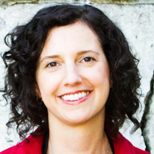December 18, 2012 — Utilities traditionally have generated power centrally, using coal-fired power plants, for example, and delivered it to consumers via transmission lines and distribution centers. But as renewable energy gains in the electricity mix, homeowners and businesses are increasingly seizing the opportunity to generate their own power or sell to the grid. Such distributed generation got a boost in June 2011 when Google announced it would invest $280 million in SolarCity, a company that installs residential solar panels. Most energy experts agree that distributed generation will be part of our energy future. But how big a part is a matter of some debate.
To learn more, we talked to Steven Weissman, who teaches energy and law at the University of California, Berkeley, and is advising the California governor’s office on how to install 12,000 megawatts of distributed generation by 2020. Duke Energy spokesman Jason Walls works on distributed generation for the company, a major utility in the Southeast.
Steven Weissman
Associate Director, Center for Law, Energy and the Environment – UC Berkeley
“The challenges we face in trying to replace fossil fuel generation require an all-hands-on-deck approach. Distributed energy has an essential role in our future energy solutions.
Any kind of power generation requires land, but distributed generation can often piggyback on existing land uses. You don’t have to take pristine desert land and cover it with solar cells; you can use space on existing roofs. There’s great potential for developing distributed generation on public lands as well. We can use freeway rights of way or float solar cells on aqueducts and reservoirs.
If we rely on large central station solar and wind projects, we’re going to need tremendous investment in new transmission facilities. It’s very difficult to get permission to site transmission lines through our modern land-use pattern of suburban sprawl and dense urban areas. Where they are built, they often have to be underground, making them very expensive.
Also, transmission is inefficient. As energy travels down the lines, we lose a lot of power in the form of heat. The result is that you need to build more power plants to get the energy you need. Distributed generation overcomes this problem.
The most attractive distributed generation resource is solar photovoltaic because it’s clean and quiet and unobtrusive. But variability is a challenge: The amount of energy generated can change minute to minute as clouds roll by. Utilities have to respond to these changes by, say, ramping up extra gas-fired power plants or by reducing demand, making grid management more complex and expensive.
However, distributed generation done right can address this problem better than central generation. If you’ve aggregated hundreds of megawatts via solar panels distributed across a region, then the total supply curve looks smoother as clouds move from one location to another.”
Jason Walls
Communications Specialist, Duke Energy
“Distributed generation is not something that we proactively market. Rather, we see it as an opportunity for our customers if they are willing to assume that large capital investment. The payback period can be quite long, depending on the cost of the system.
We have roughly 400 customers in North Carolina and South Carolina who have a connection into our grid from self-owned generation on their property. The numbers are much lower in the other states in the Duke Energy service area.
Some have a net-metering relationship with us, in which they use the power they generate but buy extra power from us when necessary. Other customers sell all their generated power to us and then buy electricity like a regular customer. In both cases, we work with them to provide a safe interconnection, which is their financial responsibility.
We agree to buy solar power from these customers in North Carolina at preset rates, which are then heavily subsidized by NC GreenPower.
While these customers do end up buying less electricity from us than regular customers, we don’t see them as a threat to our business model. When you poll customers, they are most concerned about price and reliability. Solar systems are still expensive, and electricity rates in the Carolinas are about 30 percent below the national average. So as long as traditional generation remains reliable and that price remains low, we don’t foresee distributed generation replacing it. In fact, our projections show demand for traditional base load, central generation continuing to grow well into the future.
While there are political pressures on coal-fired generation that could increase its price, nuclear is also a big part of our energy mix, and we see nuclear continuing to grow in importance to help keep prices low. We believe that traditionally generated electricity will continue to be competitive.”
This article originally appeared in the Fall 2011 issue of Momentum magazine, Ensia’s predecessor, as “Power Play.”
Ensia shares solutions-focused stories free of charge through our online magazine and partner media. That means audiences around the world have ready access to stories that can — and do — help them shape a better future. If you value our work, please show your support today.
Yes, I'll support Ensia!
